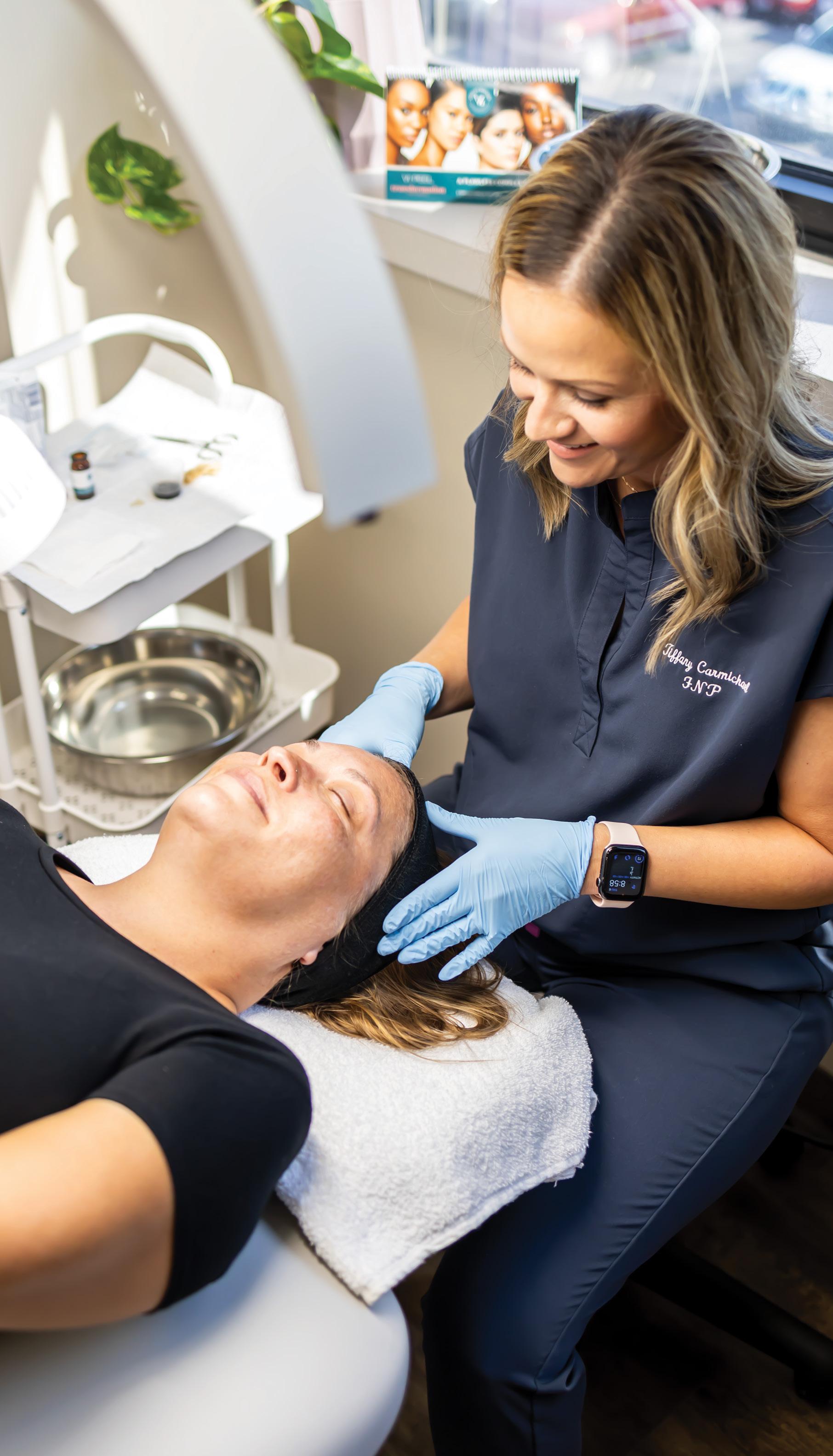Chemical Peels
As a nurse practitioner in the aesthetics field, fall not only means pumpkin spice lattes, sweaters, bonfires, and falling leaves – it makes me think of corrective treatments for the skin! Cooler temperatures, less direct sun exposure, and fewer outdoor activities make autumn a great time to undergo a medical-grade chemical peel. But what is a medical-grade chemical peel, who can receive one, and what is the process like?
When you look in the mirror, do any of the following skin problems bother you? Overall tone and texture of the skin, freckling, active acne, oiliness, congestion, melasma, rosacea, fine lines and wrinkles, loss of elasticity, hyperpigmentation, scarring, or pore size? These are all conditions we can treat with medical-grade peels.
There’s a big difference between medical-grade chemical peels and a peel you perform at home or receive at a non-medical spa. Non-medical peels are superficial, meaning they can only penetrate the outermost layer of skin, or stratum corneum. There’s nothing wrong with indulging in this kind of peel, but results are mild for most people. Medical-grade peels penetrate deeper into the epidermis or dermis, depending on your treatment needs, with more noticeable results.
In recent years there have been amazing advancements in medical-grade chemical peels. In the past, chemical peels were commonly formulated with a single acid and treated a limited number of conditions. These single-formulation peels have a higher risk of pain, discomfort, and more difficult recovery time, and were limited to certain skin types (Fitzpatrick Skin Types I-III), but this is no longer the case.

At Boone Health Medical Spa, we proudly use VI Peels from Vitality Institute. VI Peels work with a blended set of acids and other nutrients, which gives us the ability to treat a combination of concerns. This formulation of ingredients can penetrate the skin with a lower risk of post-peel complications and without prolonged healing time. VI peels create a controlled micro-damage to the epidermis and papillary dermis layers of the skin.
As a result, we see exfoliation of dead skin cells, regeneration and stimulation for cell renewal and dermal structures, and an increase in collagen and elastin.
Unlike older peels, VI Peels can be used on many age groups, ranging from teenagers to advanced-age adults. All skin tones, from fairest to darkest (Fitzpatrick Skin Types I-IV) have been clinically tested and approved for safe use.
Application is quick, easy, painless, and takes less than an hour from start to finish. All VI peels include Phenol in their formulation which helps to numb the skin for a painless and comfortable experience. At the end of your appointment, you’ll be sent home with everything you need to care for your skin for the next 7 days.
Peeling typically starts for most patients on day 3, with most peeling occurring between days 3 through 6. By the 8th day, 95% of your peeling should be complete.
Now, the million-dollar question: how much will you peel? Simply put, everyone is different. Your skin will decide how much to peel. The current condition of your skin plays a large role, including factors like routine exfoliation, oiliness, dry or dehydrated skin, or routine retinoid use. Some people peel in sheets while others will have light flaking. But it’s only a few days of heavy peeling, and by this point, you are well on your way to glowing skin.
The popular opinion among our patients is that recovery is quite easy with minimal downtime. Plan for a full 10 days for 100% recovered and improved skin. For any type of medium-depth peel, I always recommend scheduling at least 2 weeks before any big event or trip. Avoid direct sun exposure for at least 48 hours before your peel application. After your peel application, limit your outdoor activities and avoid direct sun exposure the week following your peel application. And as always, we recommend daily SPF and sun protection whether you’ve had a peel or not!
With every patient, we can see improvements after a single VI peel. For optimal results when correcting skin concerns, VI Peels are best when done as a series of 3 treatments. Depending on the severity of your concern, more peels could be required. Once optimal results are seen, we recommend 1 to 2 maintenance peels a year. If you opt for a series of treatments, we recommend waiting at least 4 weeks in between each peel to give your skin adequate time to heal and return to baseline.

While VI peels can treat a wide range of age groups and skin types, some people aren’t candidates for chemical peels. One of my top priorities is to ensure that all of my patients feel confident before they go in for treatment. We always review your history before we do anything to ensure a treatment is right for you.
If you think a medical-grade chemical peel might be right for you, schedule a free consultation! Consultations are a great way for you to ask questions, share concerns, discuss your skin history, and go over potential options for peels.
By Tiffany Carmichael, FNP

Tiffany Carmichael, also known as Tiffany C. the aesthetic NP, is a board-certified family nurse practitioner and trained aesthetic provider.